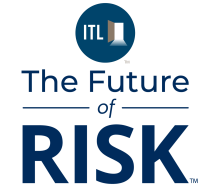Change is inevitable, but managing it effectively is where the challenge lies. Technological advancements are moving at an incredible pace, creating numerous opportunities. Many transformation initiatives fail - not because of technology itself, but because of how change is managed.
Recently, I had the opportunity to participate in the INFUSE webinar on Managing Change, alongside industry experts, where we explored what makes transformation efforts successful and the common pitfalls that organizations face. It was a great discussion, and I wanted to share some of the insights we covered.
The Foundation of Successful Change
One of the biggest challenges in implementing change is poor planning. Too often, organizations become enamored with technology without considering its practical effect at the operational level. A shiny new tool means nothing if it doesn't address real pain points for employees on the ground.
A well-structured change program should include:
• Clear Planning & Defined Success Metrics - Organizations must ask themselves, "What does success look like? What does failure look like?" Without a clear roadmap, businesses risk implementing solutions that fail to deliver tangible benefits.
• Engaging People Early - The people who use the technology daily should be actively involved in planning and implementation. Their input ensures that the solution is solving real problems.
• Focus on Outcomes, Not Just Processes - Change programs can quickly become overly detailed, leading to loss of sight of the bigger picture. Keeping the end goal in mind helps teams stay aligned and motivated.
As Matt Carter, practice director at Altus Consulting, put it during the webinar:
"You have to keep an abstracted view of the prize you're going after. Programs evolve quickly, and people lose sight of the bigger picture. Keeping them focused on where they're headed ensures success."
Biggest Barriers to Change: The Human Element
While legacy systems and regulatory frameworks are common hurdles in insurance, the biggest barriers are human-centric. Underwriters, IT teams, and change managers often speak different "languages," making it difficult to align on goals. Bridging this gap requires creating a common understanding across all stakeholders.
Another major obstacle is clarity of purpose - many transformation initiatives attempt to solve too many problems at once. Instead of spreading efforts too thin, organizations should focus on one or two key areas where they can create meaningful effect.
Emma Cullum, head of operational strategy change and excellence at QBE, emphasized this during the discussion:
"One of the biggest challenges I've seen is organizations trying to do too much at once. Instead of creating a solution that excels in one or two areas, they end up with something that doesn't really hit the mark."
Technology's Role in Change Management
Technology is a critical component of transformation, but it should never be the starting point. The biggest mistake companies make is assuming technology alone will fix broken processes. Instead, organizations should:
• Obsess Over the Business Challenge First - Start with understanding the core problem before selecting a tool.
• View Technology as a Connected Ecosystem - No solution exists in isolation, successful adoption depends on integration with existing processes.
• Avoid the 'Silver Bullet' Mindset - No single piece of technology will solve every issue. Instead, incremental improvements and phased adoption drive the best results.
A key trend emerging is custom-built AI solutions that adapt to individual user needs. In the future, organizations will move away from large, off-the-shelf systems in favor of more tailored, intelligent solutions.
Lessons from Experience
Throughout my career, I've seen many businesses invest heavily in technology, only to struggle with adoption. One of the most effective strategies I've used is implementing a "soul-sucking task list"—asking employees to list their most frustrating daily tasks. If a technology investment doesn't directly address one of these pain points, it's unlikely to gain traction.
In another case, a company assumed it had a standardized process for policy cancellations. However, when we examined it, we found three different workflows being used simultaneously. The lesson? You can't please everyone, but you can focus on outcomes. Once the desired outcome is clear, the process will naturally follow.
Final Thoughts: Embracing a Culture of Change
The key takeaway from our discussion? Diminish fear within your organization. Fear of failure, fear of job loss, fear of the unknown—these are the real barriers to change. By fostering an environment where employees feel safe to adapt and innovate, organizations can bridge the gap between technology and transformation.
As Emma Cullum, head of operational strategy change and excellence at QBE, put it:
"A child born today will experience a year's worth of change in just 11 days by the time they turn 60. The companies that succeed will be the ones that embrace this pace of change, continuously modernizing instead of waiting for a perfect solution."

